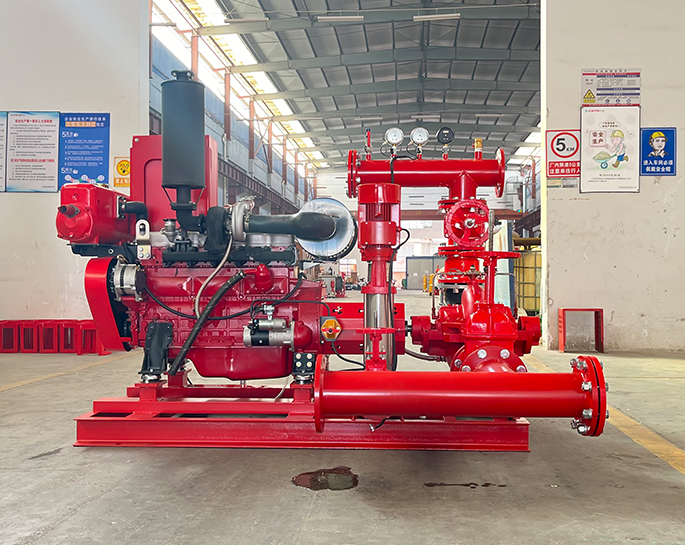How are fire pumps protected from water hammer effects during sudden valve closures?
Jan 05, 2024
Share:
Protecting fire pumps from water hammer effects during sudden valve closures is crucial to ensure the longevity and proper functioning of the pump and the entire water supply system. Water hammer occurs when there is a sudden change in flow, typically caused by the rapid closure of a valve, which can lead to pressure surges and potential damage to the pump and piping. Here are some common methods used to protect fire pumps from water hammer effects:
1. **Slow Closing Valves:** Using slow-closing valves can help mitigate water hammer by gradually reducing the flow instead of abruptly shutting it off. This reduces the impact of sudden pressure changes.
2. **Check Valves:** Installing check valves in the discharge piping helps prevent reverse flow, reducing the risk of water hammer during sudden valve closures. Check valves allow water to flow in only one direction, preventing backflow.
3. **Pressure Relief Valves:** Pressure relief valves are designed to open when the system pressure exceeds a certain limit, releasing excess pressure and preventing water hammer. They act as a safety mechanism to protect the pump and piping.
4. **Air Chambers or Surge Suppressors:** Installing air chambers or surge suppressors in the piping system provides a cushion of air that absorbs the shock caused by water hammer. These devices allow for the expansion of water during sudden pressure changes, reducing the impact on the pump and pipes.
5. **Water Hammer Arrestors:** Water hammer arrestors are devices that absorb and dissipate the energy generated by water hammer. They are typically installed in the piping system near the pump or at critical points where water hammer is likely to occur.
6. **Electronic Control Systems:** Modern fire pump control systems often include electronic controls that can manage the pump's operation and prevent sudden valve closures. These systems can incorporate soft start/stop features and adjustable closing times to minimize water hammer effects.
7. **Proper System Design:** Adequate system design, including the correct sizing of pipes and valves, can help reduce the occurrence of water hammer. Properly designed systems take into account factors such as flow rates, pipe diameters, and valve types to minimize sudden pressure changes.
It's important to note that a combination of these measures is often used to provide comprehensive protection against water hammer effects. Consulting with a professional engineer experienced in fire protection system design can help ensure that the appropriate measures are implemented for a specific system.

1. **Slow Closing Valves:** Using slow-closing valves can help mitigate water hammer by gradually reducing the flow instead of abruptly shutting it off. This reduces the impact of sudden pressure changes.
2. **Check Valves:** Installing check valves in the discharge piping helps prevent reverse flow, reducing the risk of water hammer during sudden valve closures. Check valves allow water to flow in only one direction, preventing backflow.
3. **Pressure Relief Valves:** Pressure relief valves are designed to open when the system pressure exceeds a certain limit, releasing excess pressure and preventing water hammer. They act as a safety mechanism to protect the pump and piping.
4. **Air Chambers or Surge Suppressors:** Installing air chambers or surge suppressors in the piping system provides a cushion of air that absorbs the shock caused by water hammer. These devices allow for the expansion of water during sudden pressure changes, reducing the impact on the pump and pipes.
5. **Water Hammer Arrestors:** Water hammer arrestors are devices that absorb and dissipate the energy generated by water hammer. They are typically installed in the piping system near the pump or at critical points where water hammer is likely to occur.
6. **Electronic Control Systems:** Modern fire pump control systems often include electronic controls that can manage the pump's operation and prevent sudden valve closures. These systems can incorporate soft start/stop features and adjustable closing times to minimize water hammer effects.
7. **Proper System Design:** Adequate system design, including the correct sizing of pipes and valves, can help reduce the occurrence of water hammer. Properly designed systems take into account factors such as flow rates, pipe diameters, and valve types to minimize sudden pressure changes.
It's important to note that a combination of these measures is often used to provide comprehensive protection against water hammer effects. Consulting with a professional engineer experienced in fire protection system design can help ensure that the appropriate measures are implemented for a specific system.


.png)
.png)

.png)


